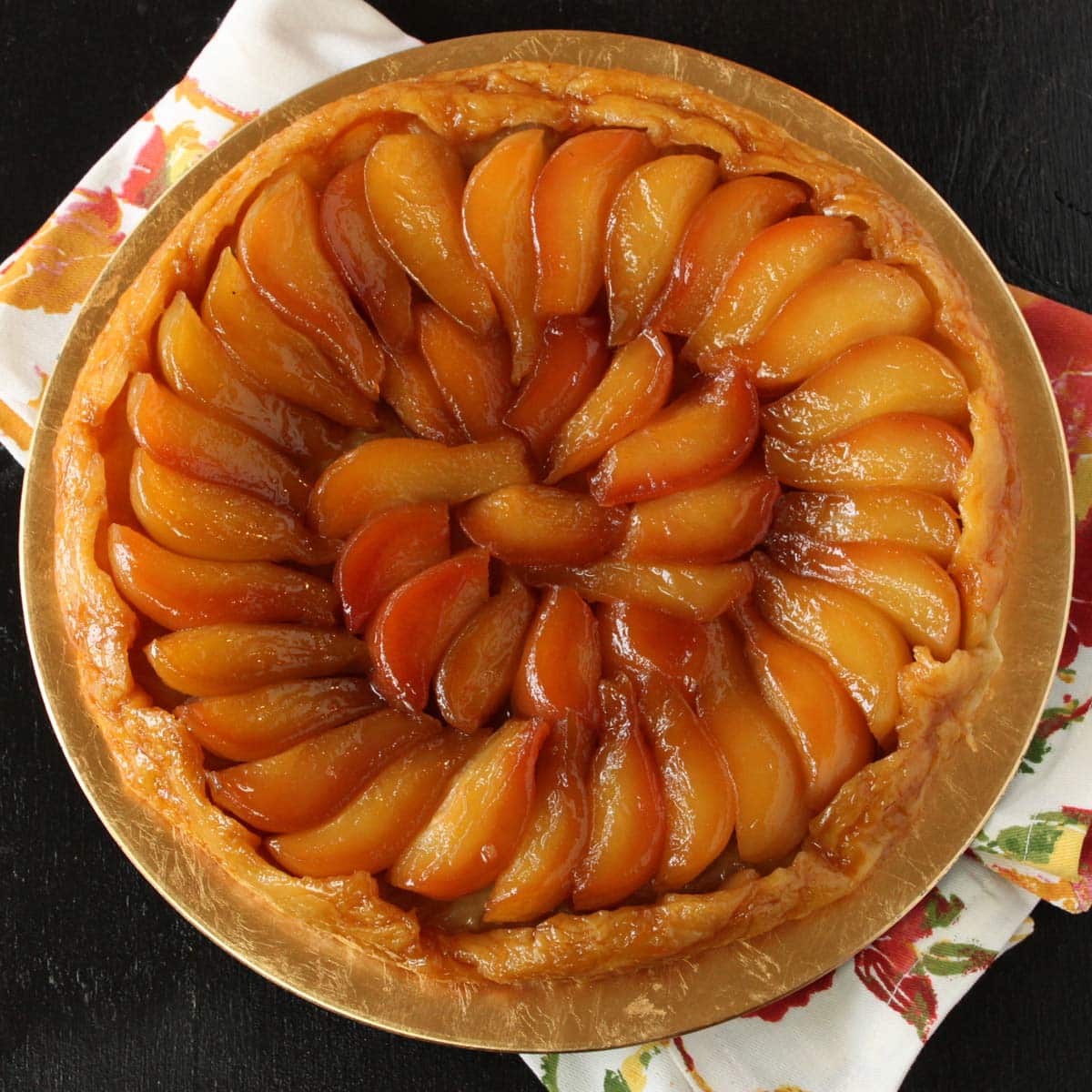Ingredients:
For the spiced caramel:100 g sugar
50 g unsalted butter
1 tsp ground cinnamon
1/4 tsp ground nutmeg
1/4 tsp ground cardamom
1/4 tsp ground ginger
1 tbsp honey
2 tbsp water
For the filling:
4–5 ripe but firm pears (e.g., Bosc or Anjou), peeled, cored, and halved
1 tsp lemon juice
4–5 ripe but firm pears (e.g., Bosc or Anjou), peeled, cored, and halved
1 tsp lemon juice
For the pastry:
1 sheet of puff pastry (store-bought or homemade)
1 sheet of puff pastry (store-bought or homemade)
All-purpose flour for dusting
Intructions:
Preheat the oven:
Preheat your oven to 200°C (390°F).
Preheat the oven:
Preheat your oven to 200°C (390°F).
Make the spiced caramel:
In an oven-safe skillet (preferably cast iron), melt the sugar with 2 tablespoons of water over medium heat. Do not stir—swirl the pan gently to dissolve the sugar evenly.
Once the sugar turns a golden caramel color, remove it from the heat and carefully stir in the butter, spices, and honey.
Mix until smooth, then spread the caramel evenly across the bottom of the skillet.
In an oven-safe skillet (preferably cast iron), melt the sugar with 2 tablespoons of water over medium heat. Do not stir—swirl the pan gently to dissolve the sugar evenly.
Once the sugar turns a golden caramel color, remove it from the heat and carefully stir in the butter, spices, and honey.
Mix until smooth, then spread the caramel evenly across the bottom of the skillet.
Prepare the pears:
Toss the pear halves in lemon juice to prevent browning.
Arrange the pears, cut side up, in the skillet over the caramel. Pack them tightly, as they will shrink during cooking.
Toss the pear halves in lemon juice to prevent browning.
Arrange the pears, cut side up, in the skillet over the caramel. Pack them tightly, as they will shrink during cooking.
Add the pastry:
Roll out the puff pastry on a lightly floured surface and cut it into a circle slightly larger than the skillet.
Place the pastry over the pears, tucking the edges down around the fruit. Use a knife to poke a few small vents in the pastry to release steam during baking.
Roll out the puff pastry on a lightly floured surface and cut it into a circle slightly larger than the skillet.
Place the pastry over the pears, tucking the edges down around the fruit. Use a knife to poke a few small vents in the pastry to release steam during baking.
Bake the tarte tatin:
Transfer the skillet to the preheated oven and bake for 25–30 minutes, or until the pastry is puffed and golden brown.
Transfer the skillet to the preheated oven and bake for 25–30 minutes, or until the pastry is puffed and golden brown.
Flip and serve:
Remove the skillet from the oven and let it cool for 5–10 minutes.
Carefully run a knife around the edge to loosen the pastry.
Remove the skillet from the oven and let it cool for 5–10 minutes.
Carefully run a knife around the edge to loosen the pastry.
Place a large serving plate over the skillet, then quickly but carefully invert the skillet to release the tarte tatin.`
Origin of Pear and spiced tarte tatin:
Although it is difficult to date the creation of the tarte Tatin with certainty, it is generally believed that this culinary accident occurred at the end of the 19th century, more precisely in the 1880s.
It was in the family hotel Hôtel Tatin, located in Lamotte-Beuvron in Sologne, that sisters Stéphanie and Caroline Tatin held the reins of the kitchen. One day, while Stéphanie was preparing a classic apple tart, she forgot to place the pastry before cooking the apples in the butter and sugar. To save her dish, she covered the whole thing with pastry and put the dish in the oven. The result? A delicious tart, upside down, with a caramelized crust.
The spicy pear tarte Tatin: a modern evolution
While the original recipe for the tarte Tatin put apples in the spotlight, many variations have emerged over the years. The use of pears and the addition of spices like cardamom are modern touches that bring additional complexity to this classic dessert.
These adaptations are a testament to the creativity of pastry chefs and the ability of this recipe to evolve while retaining its essence.
Late 19th century: Accidental creation of the apple tarte Tatin by the Tatin sisters in Lamotte-Beuvron.
20th and 21st centuries: Evolution of the recipe with the use of different fruits (pears, etc.) and the addition of spices.

Comments
Post a Comment